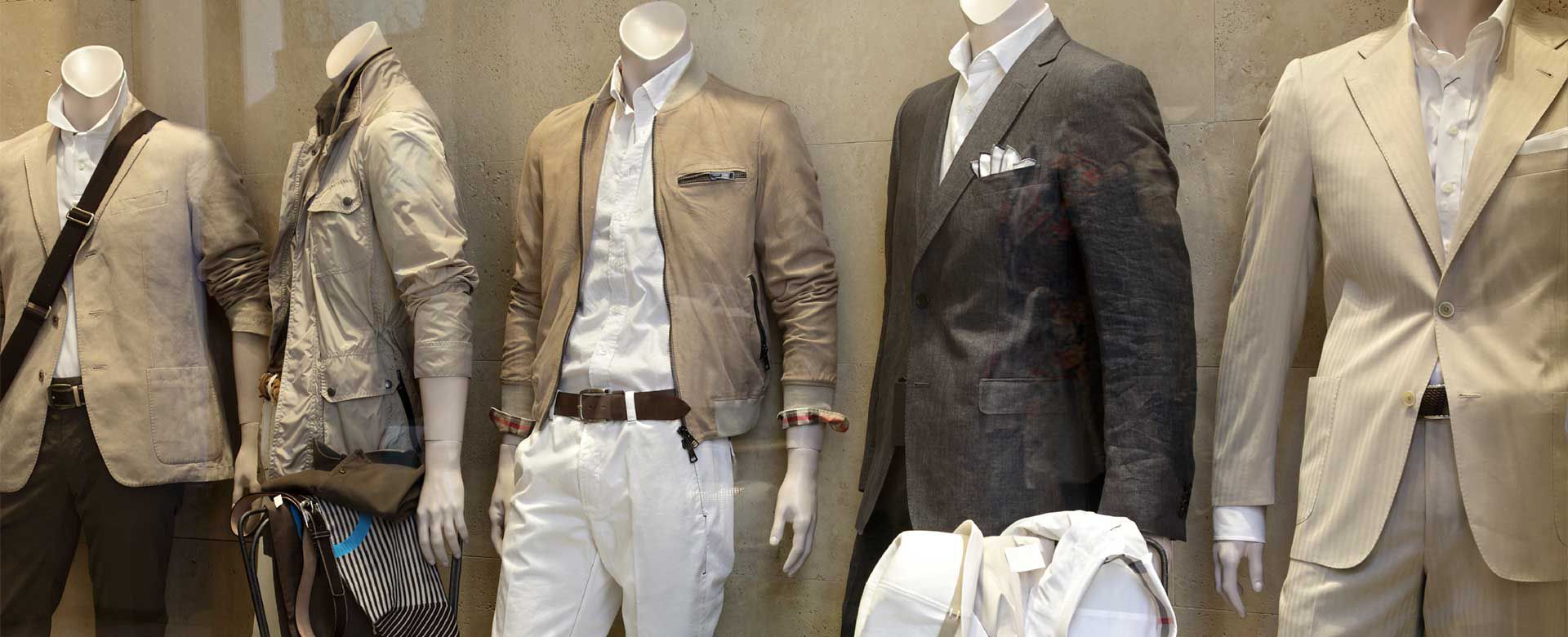Flexible search terms and filters for searching and browsing
Customers use many different terms to search for a product - some of which may correspond to your database and some which may not. Make sure your search function can take these variations into account - you don’t want a prospective customer to look elsewhere because they searched “teal scoop-neck ¾-sleeve” but your system could only find a “blue-green round-neck elbow-length” shirt.Additionally, for online apparel sales, filters are an essential tool to help your customer browse and select their desired merchandise. You want to replicate an online shopping experience similar to one that might occur in a brick-and-mortar store. If a customer has a general idea of what they want, but no specific item in mind, provide the necessary tools for coming to a purchase decision without too much effort.
Dynamic Swatches
Show styling options on product detail pages with swatches that correspond to the available colors or patterns for a given item. Product images can change dynamically when the corresponding swatch is selected, allowing customers to confirm the desired styling for the item they wish to order. When you add new color options to your site, be sure that you have a swatch available to display - customers aren’t likely to buy a piece of clothing if they can’t see what it will look like beforehand. Even something as universal as “red” can have many different interpretations.Parent/Child product structure
Make sure customers only have to look one place to find a product - in all the sizes, colors, and patterns available. Offering parent-child product structure allows you to effectively and efficiently filter your products so that customers can narrow down their product options and identify their preferred configuration with minimal hassle. Customers are not likely to stick around if they have to navigate around your site for a slightly different version – light blue instead of navy, for example - of an item they’ve already decided they might want to purchase. The quicker a customer can get from browse to checkout, the more likely they are to complete the sale.Sizing Charts
Create dynamic sizing charts that are easy to update and simple to custom design. If you have online storefronts in multiple countries, make sure the sizing charts correspond to the sizing conventions of each country. Customers are more likely to make an apparel purchase if they can make an accurate size selection based on information you provide.Sizing charts must above all be accurate and usable. But you can easily inject a bit of personality into the design to build a bond between your customers and your brand. These touches help differentiate you from your competition, allowing you to stand out better in the minds of current and potential customers.
Image and video options
Create an unlimited number of product images for each apparel item, and upload all sorts of rich media to show off each product on your site, including videos and interactive 360 images. Images showing products “in use” (whether submitted by other customers or created by your marketing team) may help customers select additional items to use in conjunction with the item they initially set out to purchase.Rich media and video are becoming increasingly important in product merchandising. The offer you another opportunity to inject brand identity into the shopping experience, and provide customers with additional information to help them complete their purchase.
Outfit bundles
Offer full package outfits to your customers to take the guesswork out of style. Bundle systems allow you to easily pull items together under a single orderable product, and your inventory system can account for each individual item accordingly when ordered, keeping inventory accurate and streamlined.You could go even more dynamic and offer a “mix and match” bundle option. Customers browse through suggested matching tops and bottoms and can select their preferred items in the size they would like and each to their cart. It allows customers to easily compare similar pieces and find a personalized look they love.
Lookbook
Brick and mortar stores have lots of opportunities to create compelling sensory displays, for upselling and tying products together into outfits and themes. Many online apparel retailers have turned to lookbooks to offer a similar experience. A customer can browse the online catalogue for outfits they like, click the image to shop the look, and purchase all or part of the outfit. As with outfit bundles and mix-and-match browsing, lookbooks provide customers with a shopping experience more akin to in-store and encourage them to look for more than the single item that brought them to your page initially.The options for apparel merchandising may seem overwhelming, but it doesn’t take much effort to put a little polish on product pages and turn browsers into customers, especially if your ecommerce platform provides the tools to easily execute the ideas above.


